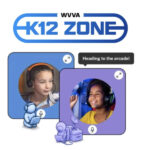When it comes to choosing the best educational path for your child, understanding the impact of school type on graduation rates and outcomes is crucial. With the increasing availability of online education, many parents are exploring alternatives to traditional brick-and-mortar schools. Online schooling promises flexibility and personalized learning, but how does it compare to traditional schooling and overall educational outcomes?
Learn how grad rates and outcomes vary between online schools and traditional education settings can help you make an informed decision about what’s best for your child’s future.
What Are Graduation Rates and Why Do They Matter?
Graduation rates are one of the most important metrics for assessing a school’s success in preparing students for life beyond the classroom. A high graduation rate suggests that a school is effectively engaging and educating its students, providing the support and resources necessary to help them complete their education.
In the context of online schools, understanding the rate of graduation is even more important. With the unique challenges and advantages that online education offers, parents need to know whether these schools are as effective as their traditional counterparts in helping students graduate on time and succeed after graduation.
Comparing Graduation Rates: Online Schools vs. Traditional Schools
The conversation around graduation rates often centers on traditional public and private schools. According to the National Center for Education Statistics (NCES), the average graduation rate for U.S. high schools has steadily increased over the years, reaching approximately 89% in recent years. This includes both public and private institutions, but the rates can vary significantly depending on the location, funding and school leadership.
However, online education offers an entirely different dynamic. Studies on online school grad rates indicate a wide range of outcomes. Online schools tend to have a graduation rate that fluctuates more dramatically, with some programs reporting higher-than-average success rates, while others may face challenges in keeping students engaged and on track to graduate.
Online School Graduations: Success Stories and Challenges
One of the advantages of online education is that it provides students with a flexible, self-paced learning environment. This can be a game-changer for students who need more individualized attention or who are dealing with personal challenges that make traditional school environments difficult. For instance, online schools often report higher rates among students who may struggle in a traditional classroom setting, such as those with learning disabilities, bullying issues or health-related challenges.
Several high-quality online schools have shown impressive graduation rates. According to recent data, some virtual charter schools and online learning programs have reported rates on par with or even exceeding those of traditional public schools. The flexibility of online schooling allows students to tailor their learning pace to their needs, which can lead to a higher sense of accomplishment and greater retention of knowledge.
It’s important to note that not all online programs are created equal. Some schools or programs may struggle with engagement, technology limitations or lack of sufficient student support. These factors can contribute to lower rates. To ensure your child’s success in an online school, it’s essential to research the program’s reputation, support services and overall effectiveness.
Key Factors Affecting Online School Grad Rates
- Personalized Learning – One of the main benefits of online education is that it can offer personalized learning experiences. Students can progress at their own pace, revisit material as needed and focus on areas where they need more help. This level of customization can significantly boost engagement and increase successful graduations.
- Teacher-Student Interaction – Online schools vary in how they facilitate communication between students and teachers. Schools that foster strong relationships between teachers and students, offer regular feedback and create opportunities for live interaction tend to see better graduation rates.
- Student Support Services – Virtual schools that offer strong support services, such as tutoring, mentoring and counseling, are more likely to have higher rates. These services help keep students engaged, motivated and on track to complete their education.
- Parental Involvement – In online education, parental involvement often is more direct and frequent. Parents who actively monitor their child’s progress, communicate with teachers and provide emotional and academic support can play a significant role in their child’s success.
The Impact of Online Education on College and Career Readiness
Graduation rates are not the only measure of success. It’s also important to consider how well students are prepared for life after graduation. College and career readiness are critical factors that can shape your child’s future. In many cases, online schools offer programs that emphasize practical skills, career exploration and college preparation.
Virtual schools often provide specialized pathways, such as advanced placement courses, dual enrollment with community colleges or career and technical education programs. These offerings give students the opportunity to earn college credits, gain real-world experience or explore different career options, setting them up for future success.
Choosing the Right School for Your Child’s Future
When comparing online schools to traditional schools, it’s important to keep in mind that each child is unique. Factors such as learning style, personal interests and long-term goals should guide your decision. While online schools can offer incredible benefits, including higher graduation rates for certain students, traditional schools might be a better fit for others.
To make an informed decision, consider the following.
- Research graduation rates. Look at therates for different schools, both online and traditional. Many states and school districts provide this data on their websites, or you can find it through school reviews and independent educational websites.
- Visit schools and talk to teachers. If possible, visit online schools or speak with teachers, administrators and current students to get a feel for the program. Ask about them, student support and how they help students stay on track.
- Evaluate your child’s needs. Think about your child’s learning style, strengths and challenges. If he is an independent learner who needs a flexible schedule, an online school could be a good fit. If he thrives in social settings and structured environments, traditional schools might be better suited to his needs.
The decision to choose between online education and traditional schooling is a deeply personal one, and it’s essential to consider personal needs as well as what each school offers including grad rates, outcomes and long-term success. Online schools offer a flexible, tailored learning environment that can be ideal for certain students, but it’s important to ensure the program you select has the right resources and support to help your child succeed. By carefully researching your options and considering your child’s unique needs, you can set them on the path to success and a bright future.















